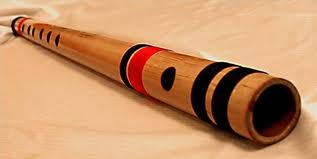Rice is our
staple food of the people of Bangladesh. It is also the main item of food of
many other peoples of the world. People of some countries of the world eat rice
as a luxury food.
Hot but moist
climate is suitable for growing rice. Bangladesh grows a large quantity and
variety of rice. China, Japan, India, Bangladesh, Burma and Thailand are the
main rice growing countries of the world. Rice is also grown in Italy, Russia, Egypt
and some parts of America.
The chief varieties of
rice grown in Bangladesh are Aman, Aus, Boro and Irri. A kind of fine rice
called Khishrabat is grown in Rajshahi and Dinajpur. The district of Barisal
is also famous for fine rice. It was once called the granary of Bangladesh.
Boro rice is
generally grown in the beds of rivers and low marshy land. The seedlings are
transplanted
there when water recedes to the bottom. It does not require any tilling of
the soil. But the Aman and Aus require good tilling before sowing paddy seeds.
Weeding and manuring are necessary for the rapid growth of paddy plants. The
Aus generally grows in low and moist lands. The Aus is harvested in the months of
Asharh and Sraban. Aman seeds are first scattered on mudddy lands. When they
grow upto
one or one and a half foot height they are transplanted in another plot of land
prepared for the purpose. When they grow to a height of two or three
feet, ears
of grains appear at the top. They become ready for harvesting in the month of
Pous. The ripe paddy is then reaped, brought home and is separated from the
stalks. It is afterwards dried in the sun.
Rice is available
when dried paddy is husked. Husking may be done either by Dhenki or mills.
Dhenki are commonly used by the rural people. The stalks and the chaff are used
as fodder for cattle. We call the boiled rice Bhat, Chira, Muri, Khai
etc. are also made of rice . Polau, Biriani, Khichuri, all are also made of
rice.
The total output of
rice in Bangladesh is not always sufficient for her needs. Owing to flood or drought, sufficient
rice cannot be produced. As a result, people suffer for want of rice. Steps
have been taken to increase the output of rice in our country. We should make
an all-out effort to carry into effect the program me set by the Government at
least to raise the output of rice to a large quantity to feed the vast
population of the country.
















